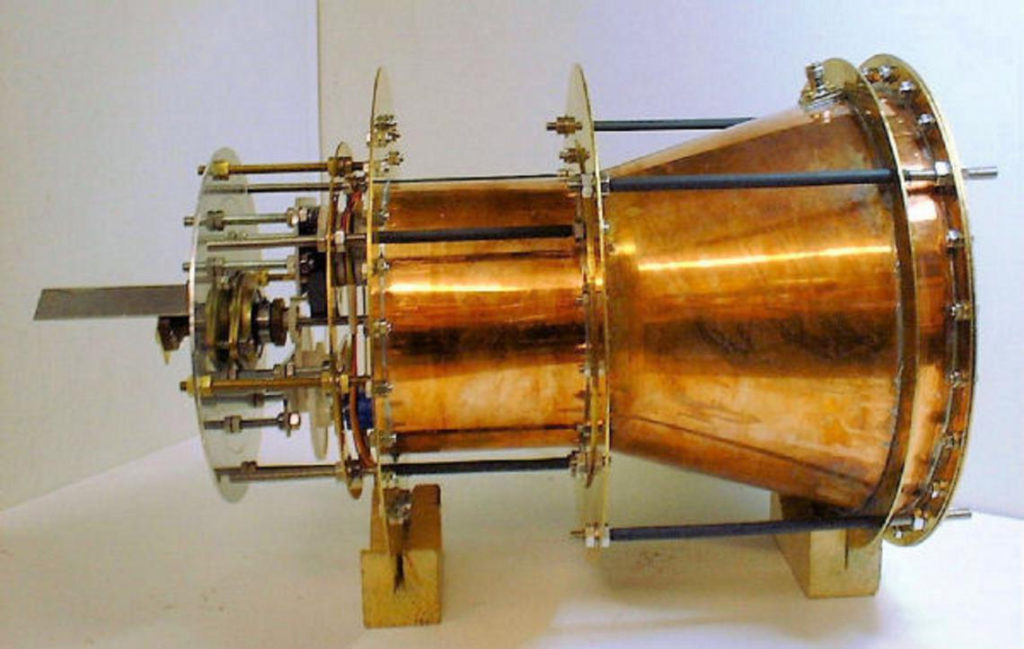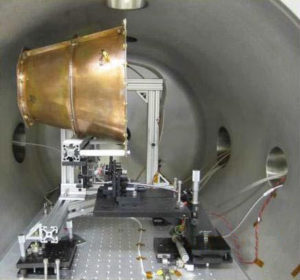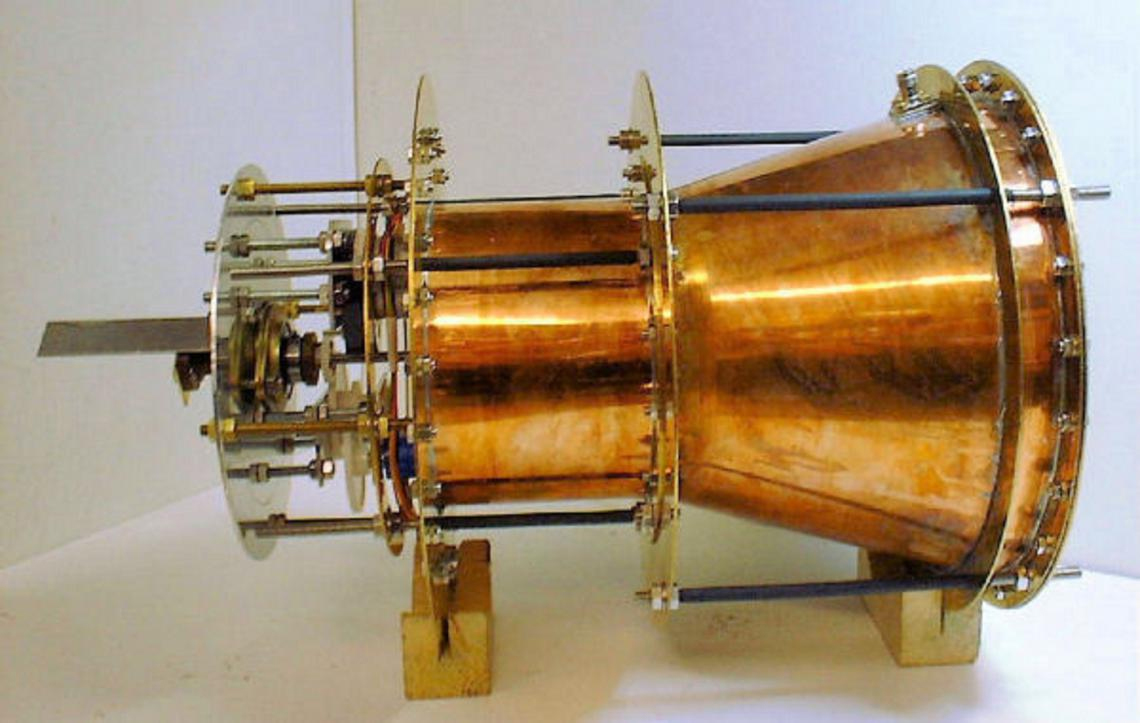Science says the EmDrive is a fake.
Its creator designed the EmDrive as an engine for space travel. The EmDrive uses a RF resonant cavity thruster. This should create thrust without any propellant. Traveling around and carrying all your fuel with you gets very expensive, and a propellant-less thruster would change space travel forever.

Unfortunately, the EmDrive’s explanation violates the conservation of momentum principle. However, initial tests of the EmDrive showed positive thrust of about 20 micronewtons. Enough to warrant future testing. Of course, even tiny results have generated significant press and a cult-following.
However, scientists and engineers are much more skeptical. They doubt any device which would break fundamental conservation principles. Because of this, NASA avoided spending its resources to test a possible hoax.
Independent Research Fails to Verify Results
Fortunately, it looks like NASA won’t have to worry. A new paper was released by the Aeronautics and Astronautics Association of France’s Space Propulsion conference this week. Researchers from the Dresden University of Technology in Germany investigated the EmDrive’s initial results. Their initial conclusions suggest that the force reported in previous EmDrive experiments may not be the result of some magical invisible force, but is from the interaction of test cables and Earth’s magnetic field.
“Our results show that the magnetic interaction from not sufficiently shielded cables or thrusters are a major factor that needs to be taken into account,” the team wrote in their research.

Typically, researchers looking for small results must be very careful to shield the device. This minimizes the affect of the testing setup itself. They calculated the forces between their cables and the Earth’s magnetic field. They reasoned that Earth’s magnetic field explained the small thrust of 20 micronewtons.
“[T]he German researchers noted that when they changed the direction that the EmDrive was facing, the direction of the thrust changed, but the level of thrust did not,” Motherboard noted. Of course, that shouldn’t happen. The EmDrive should always produce thrust in the direction the operators pointed it. “This clearly indicates that the ‘thrust’ is not coming from the EmDrive but from some electromagnetic interaction,” the researchers added.
Conclusion
Unfortunately for science fiction, the EmDrive appears to be debunked. Fortunately, scientists have saved the principle of conservation of momentum once again.
Read more:



